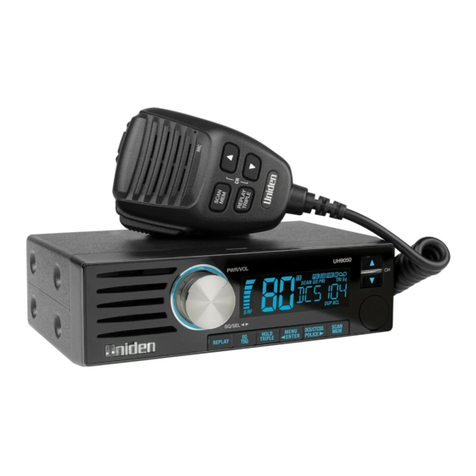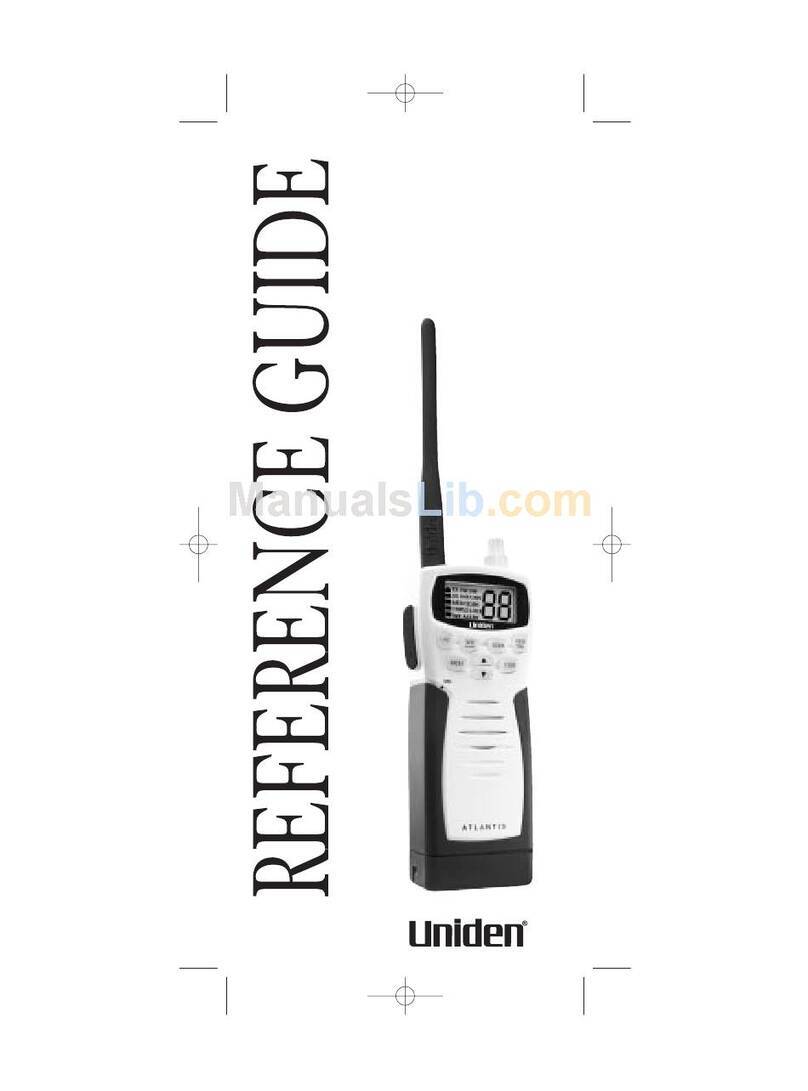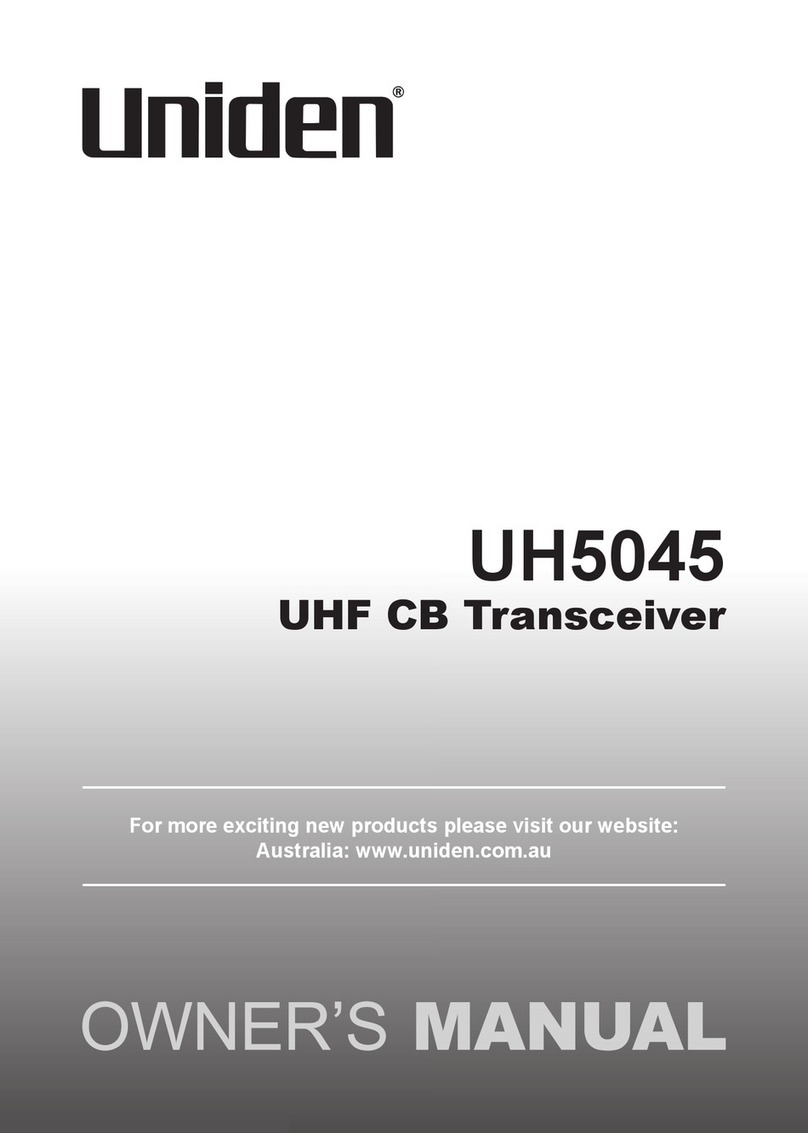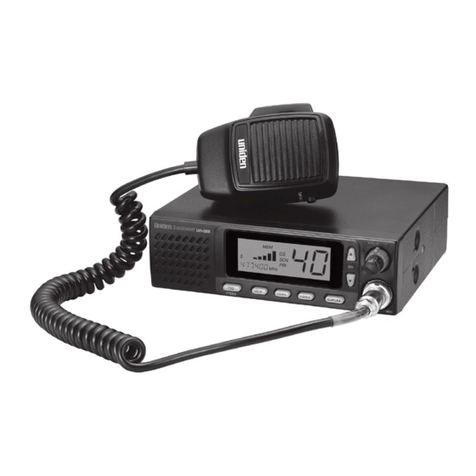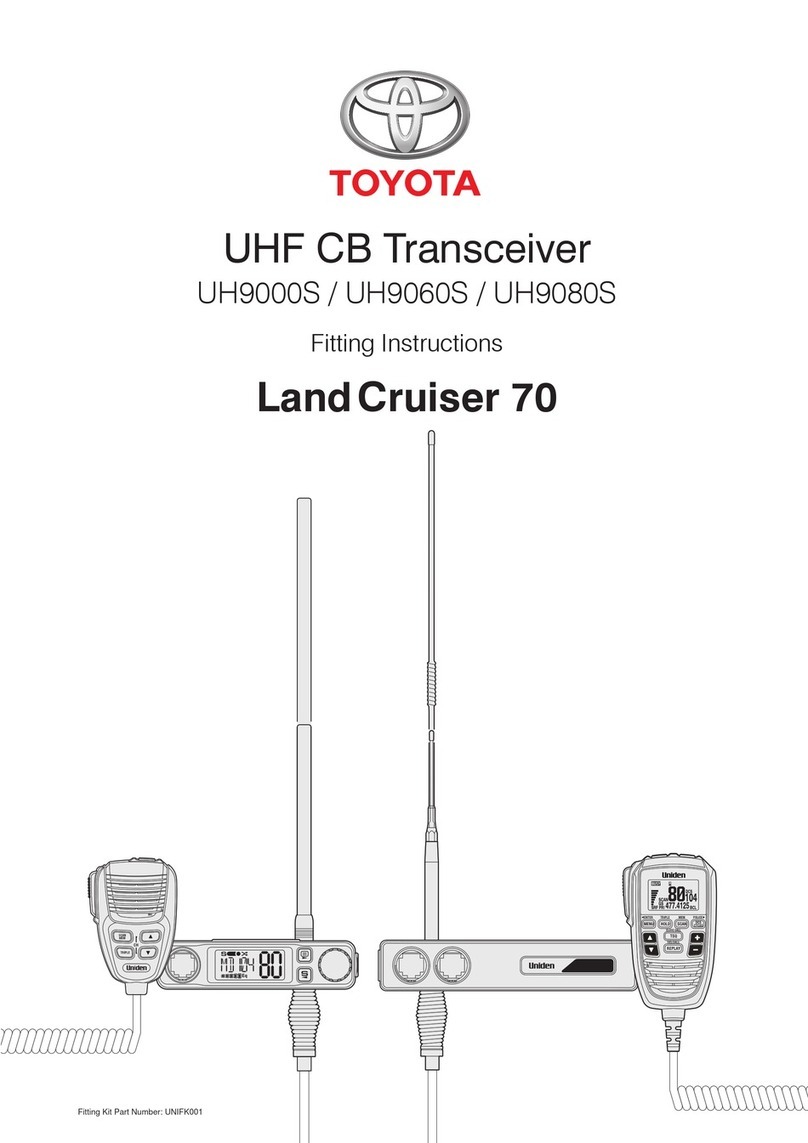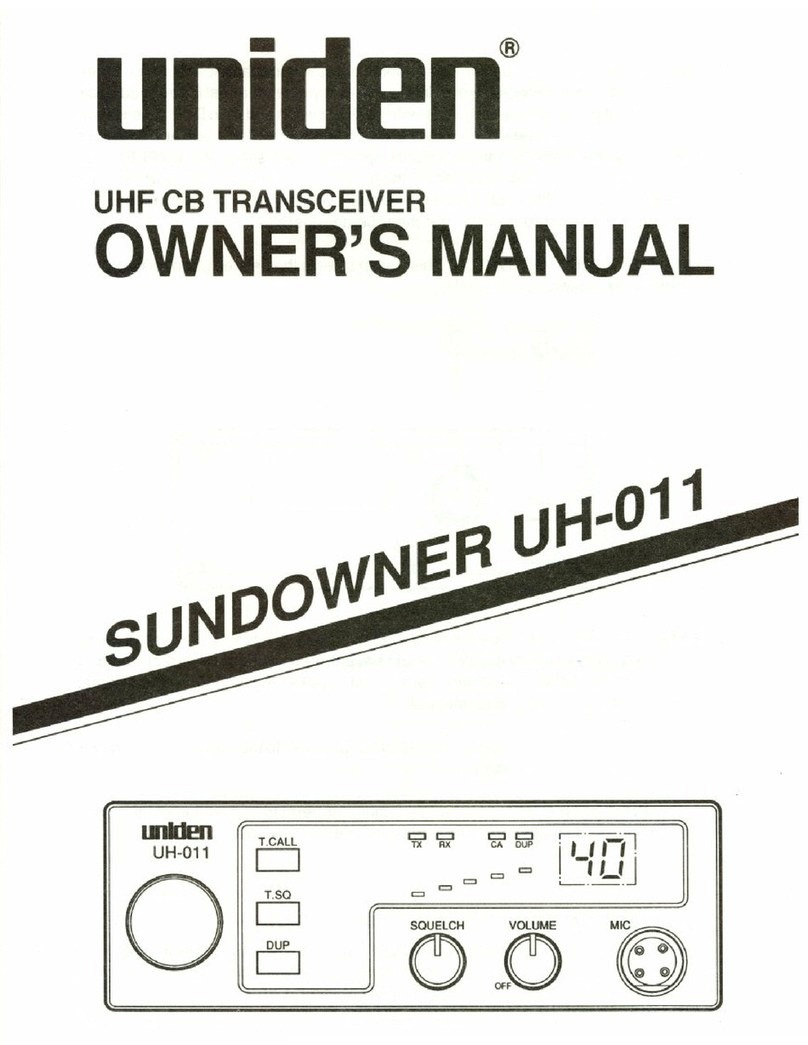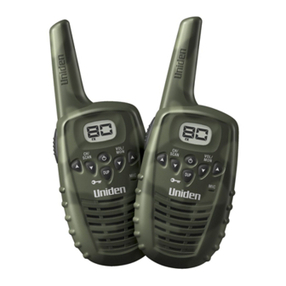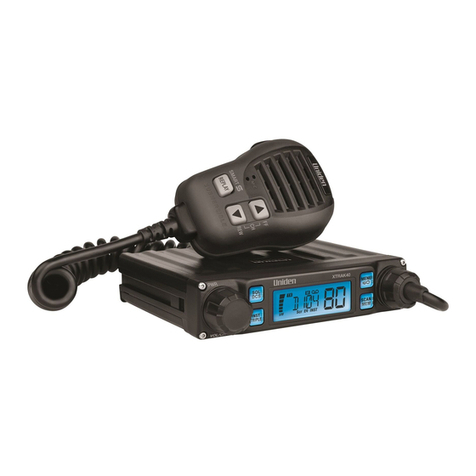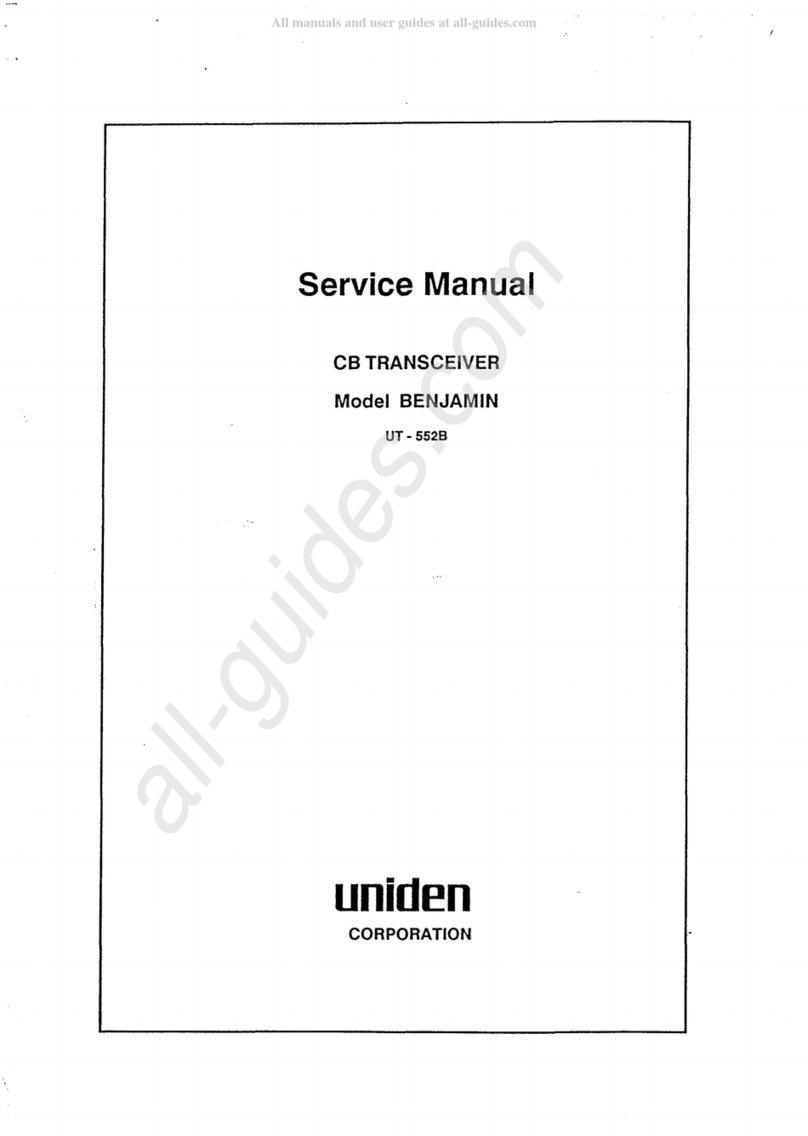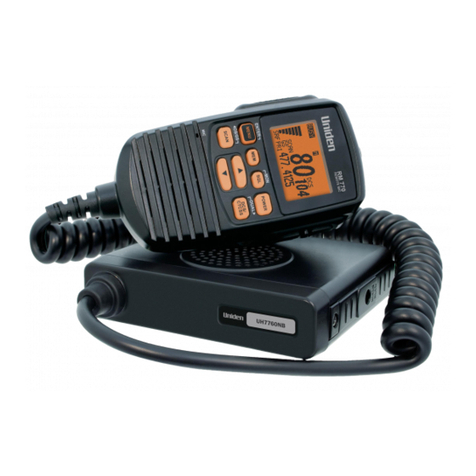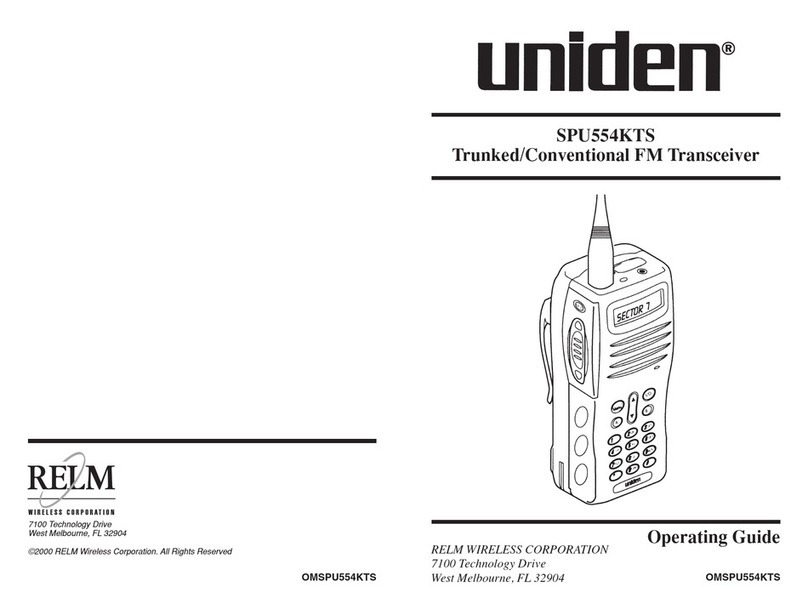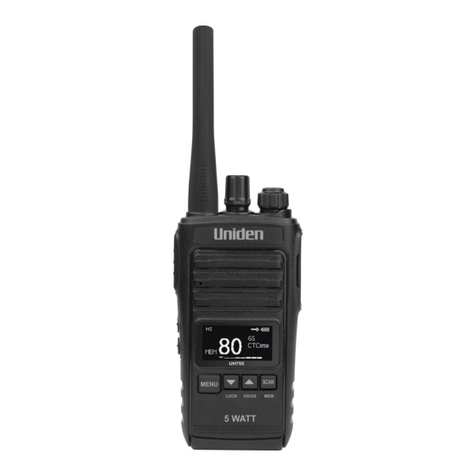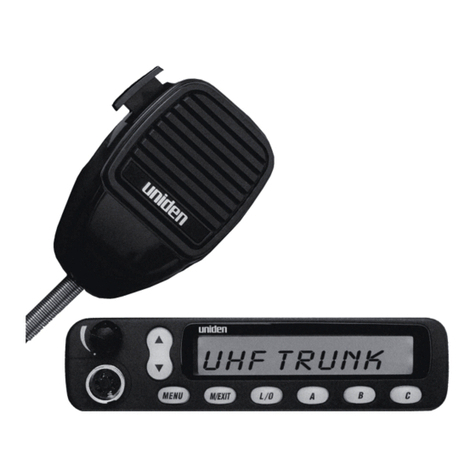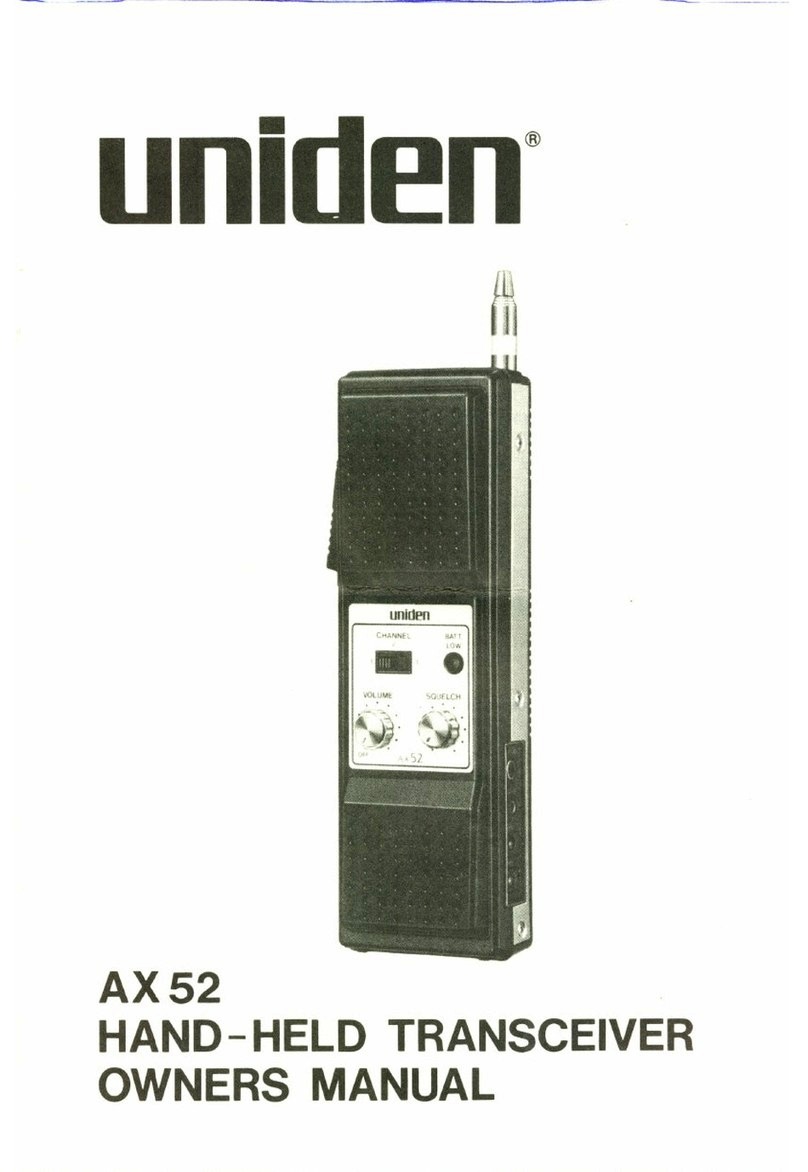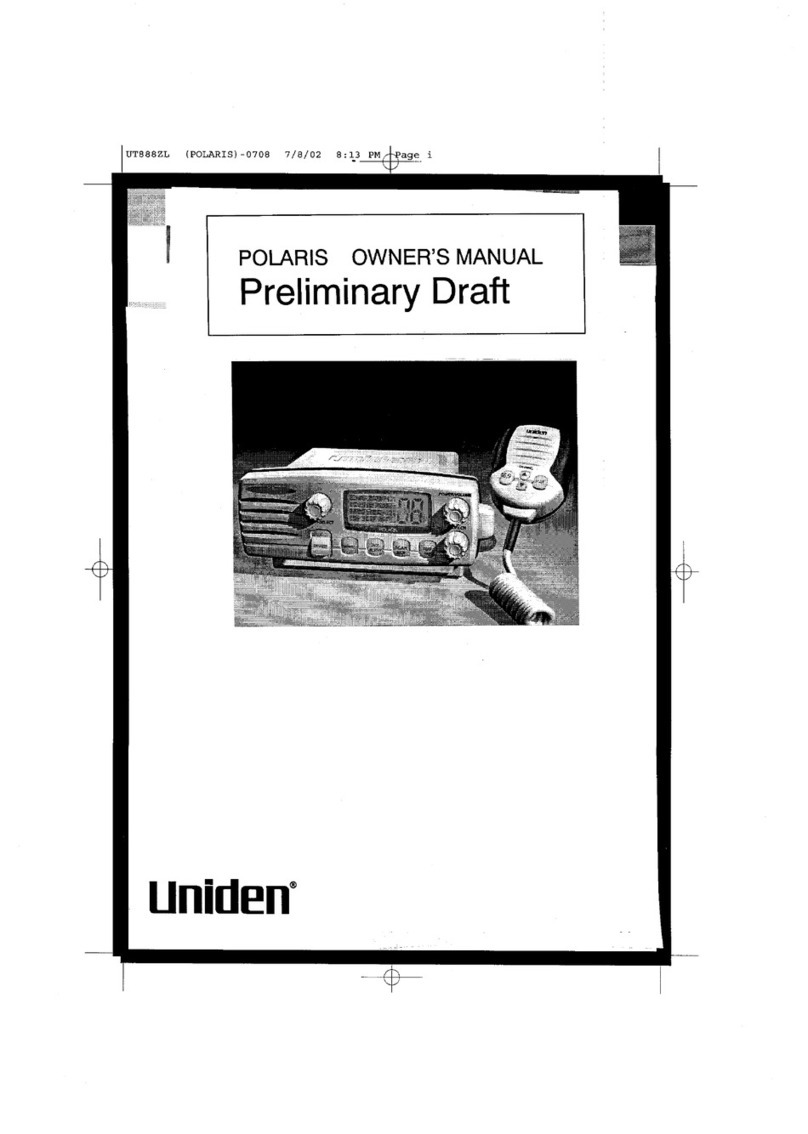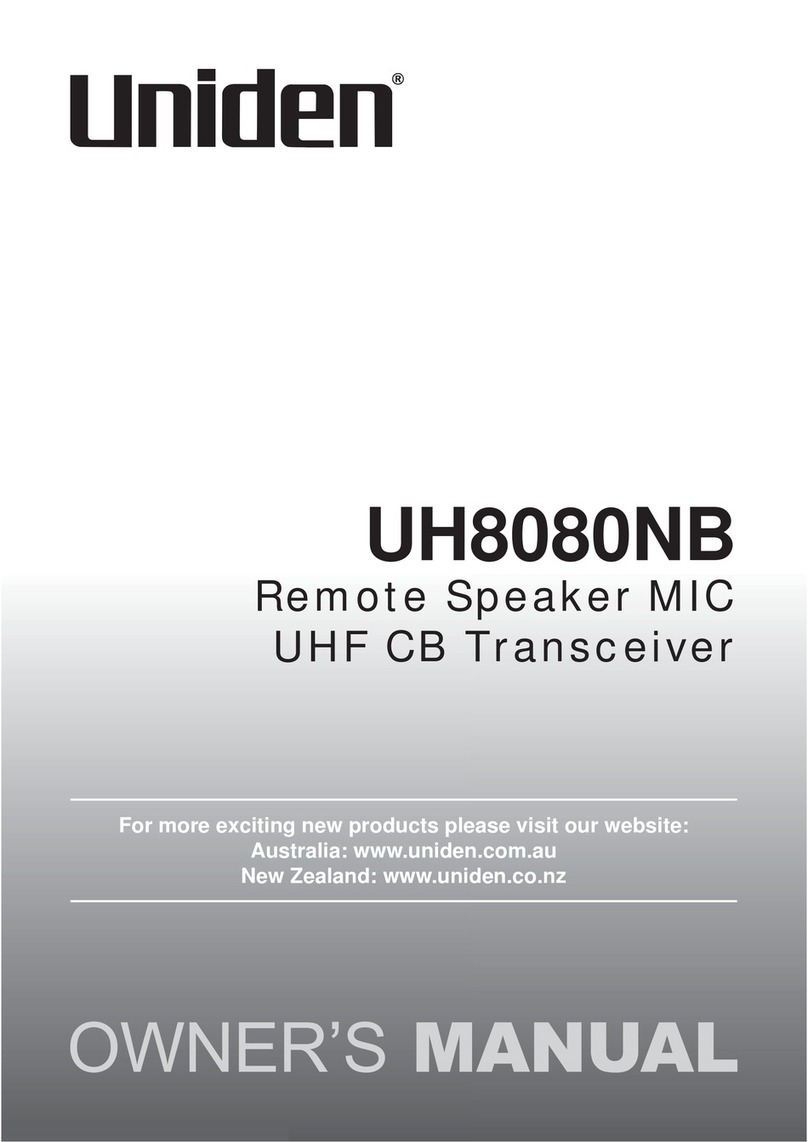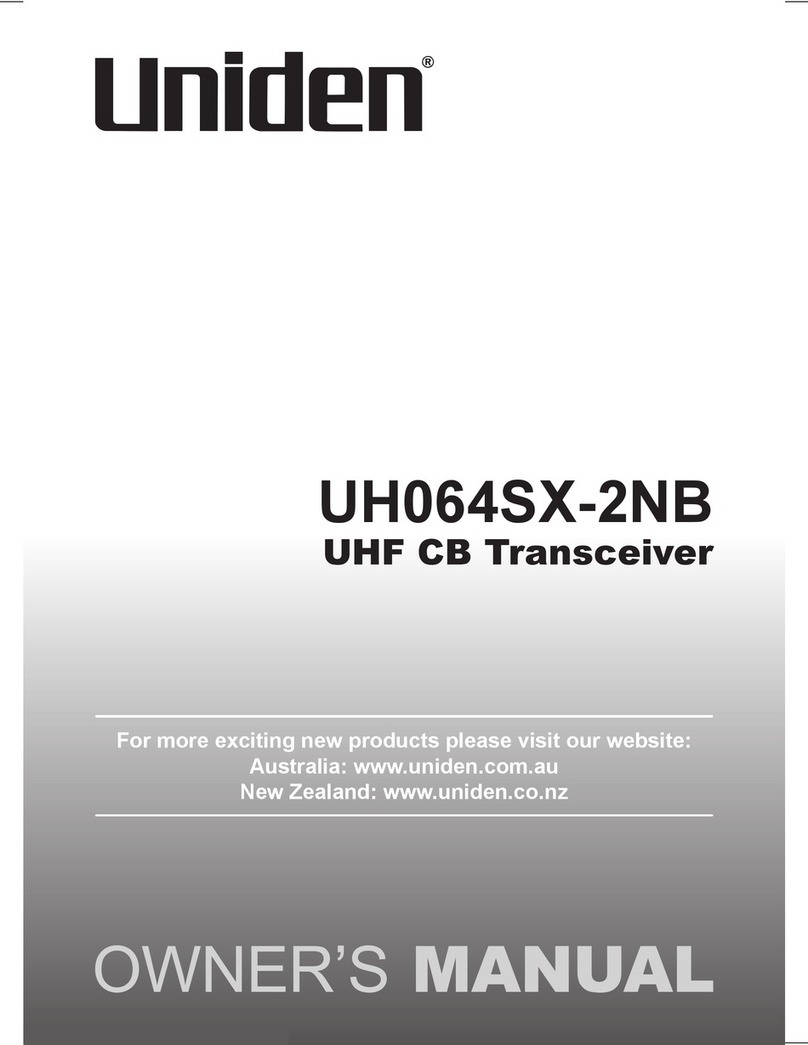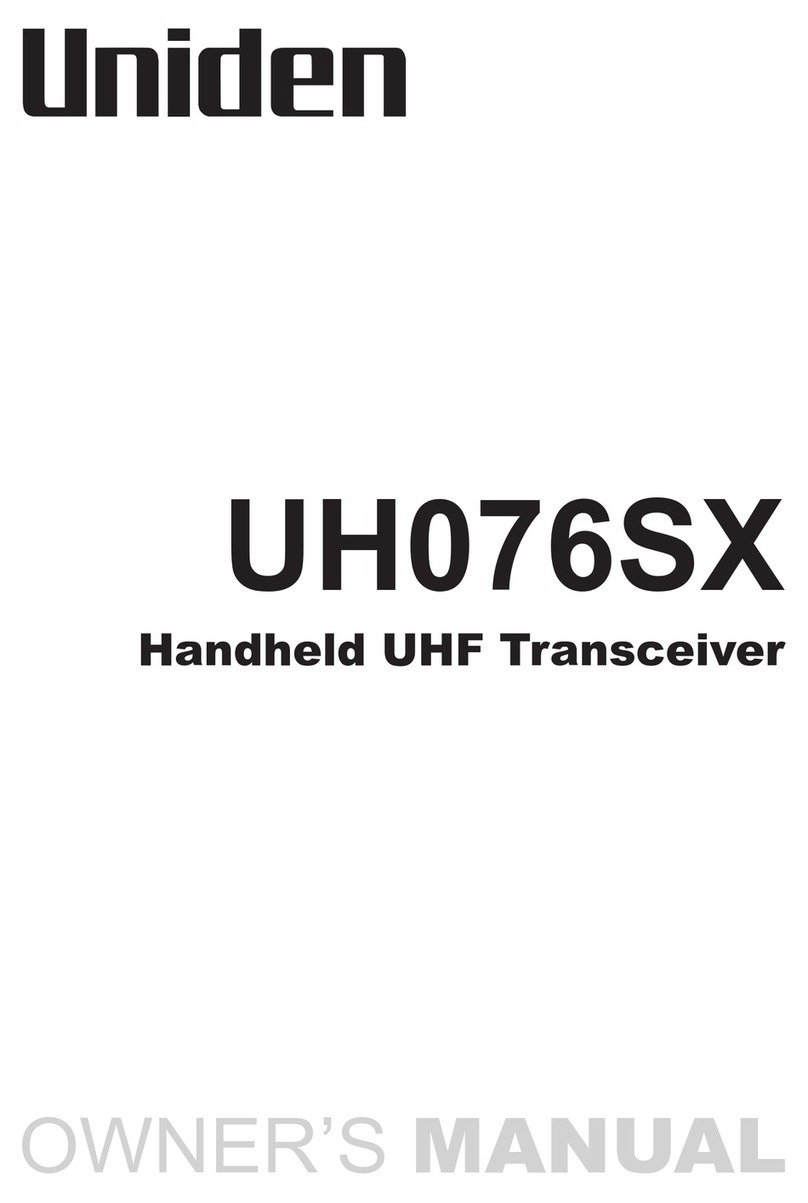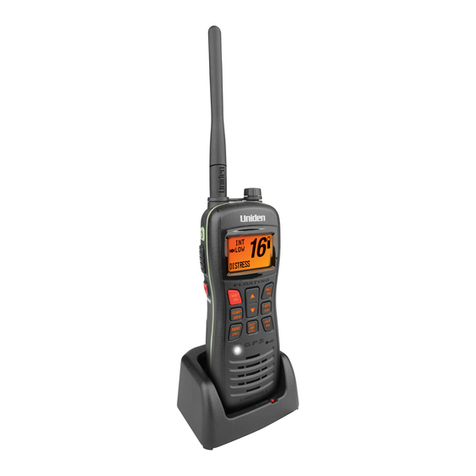8. SCANCONTROL(SCN)-Press to activate Normal OS/GS scanning or press and
hold to enable Seek Mode OS/GS Scanning.
9. MEMORY CONTROL (MEM) - Places channel numbers intothe memory scan list
(OS or GS).
10. AUDIO SCRAMBLER ITONE SQUELCH CONTROL - Controls access to audio
scrambling feature and Tone Squelched operation (Quiet Mode).
Indicators
6mCA:JMEM TS~ '~I'~I
DUP fIGS
SRF...1 SC
11~11~1
Cl Cl Cl Cl Cl Cl PRI
DDD.DDD,MHz I~ ~
11. Channel Indicator -,Indicates the channel number currently selected. On TX
SELCALL usage the Channel Indicator becomes a Memory location indicator.
12. Scan Indicator (SCN) - SCN icon appears when Normal Scan mode is activated.
When Seek Mode Scanning is selected the SCN icon blinks.
13. Priority Indicator (PRI) -Indicates that Priority channel is active when continuously
lit or Flashes when it is regularly being checked for activity while GS scanning.
14. Frequency ISELCALL ID Indicator - Shows the frequency of the current selected
channel. The Frequency Indicator changes to SELCALL ID display when using the
SELCALL feature.
15. RECEIVE SIGNAL IRF LEVEL Indicator (S IRF) - Indicates the relative signal
strength level when receiving (S) or the relative transmit power (RF) when
transmitting.
16. DUPLEX Indicator (DUP) - The DUP icon appears when duplex operation is
selected.
17. TRANSMIT Indicator (TX) - TX appears when the PTT button on the microphone
is pressed and the radio is transmitting. The RF icon also appears at this time.
18. CALL Indicator (CAL) - The CAL icon appears when the UH-100 radio is called
using SELCALL. It also appears when SELCALL codes are being transmitted.
19. SCRAMBLER Indicator (f) -The ficon appears when the Voice scrambler is
activated.
20. MEMORY Indicator (MEM) - MEM appears when the displayed channel is
programmed either in GS or OS Memory.
21. TONE SQUELCH Indicator (TSQ) - The TSQ icon will appear when the selected
channel is set to operate in Quiet Mode, or flashes when the radio is called using
SELCALL.
22. GROUP SCAN Indicator (GS) - The GS icon appears when Group Scan Mode is
activated. Open Scan is indicated by the absence of the GS icon.
4
